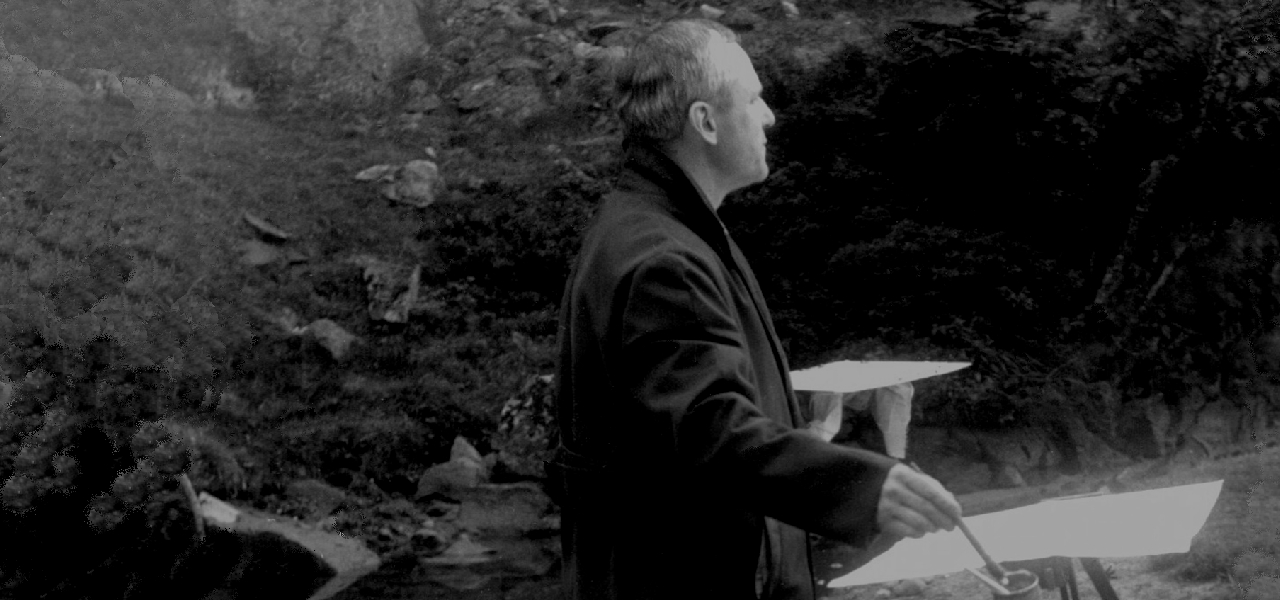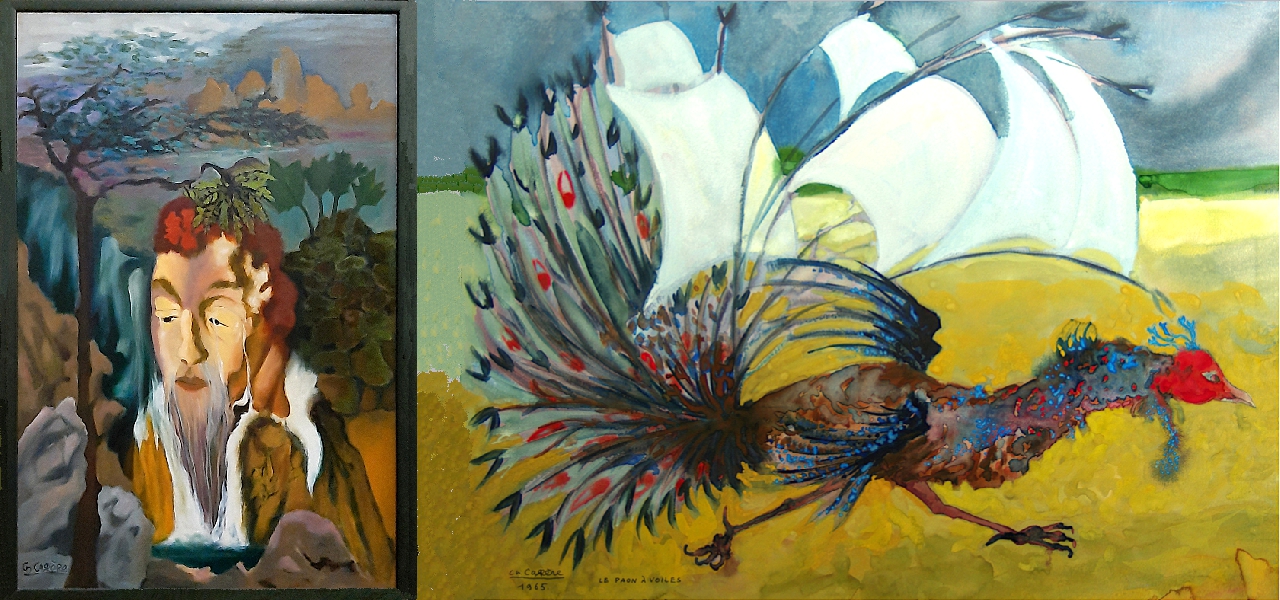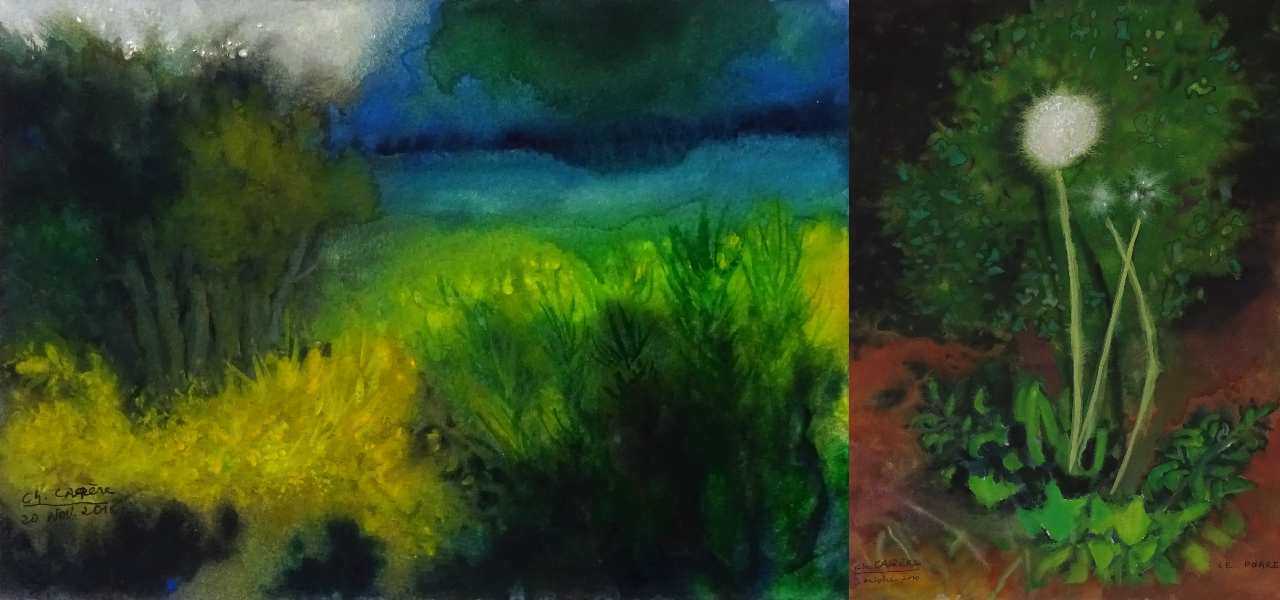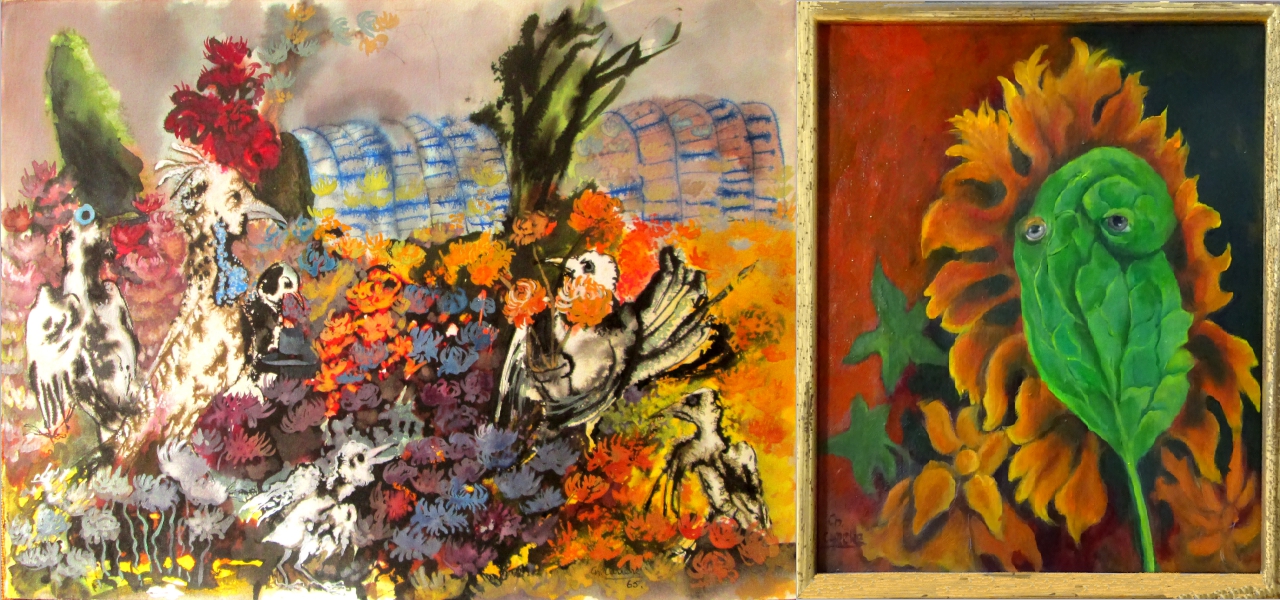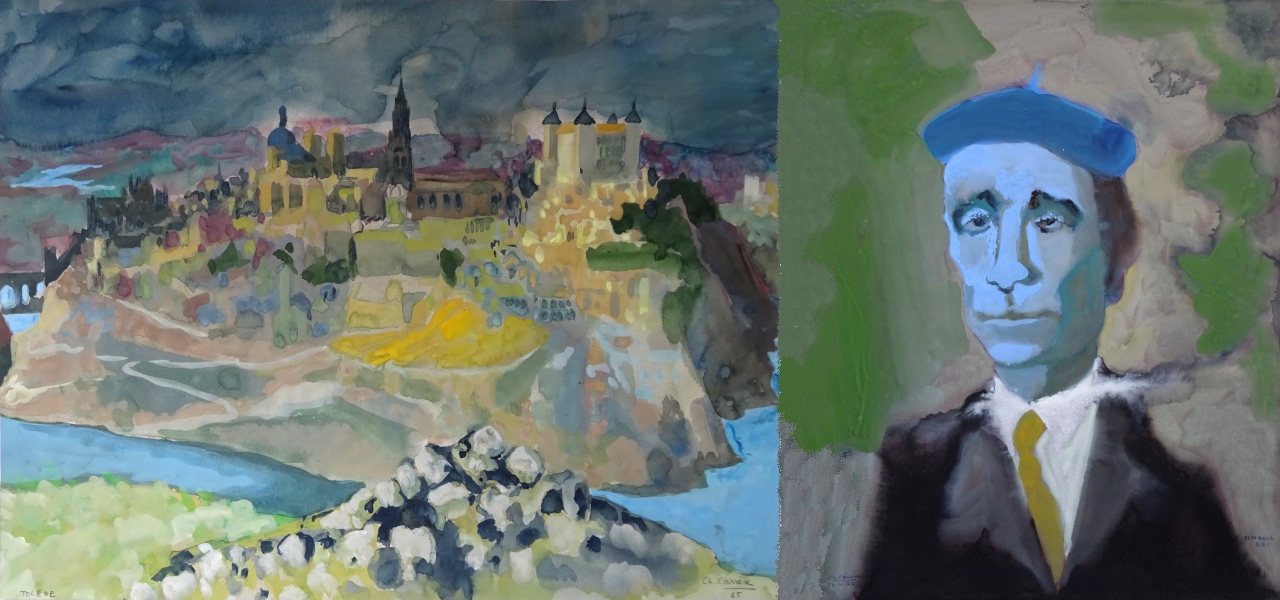On the spot
Charles Carrère likes to paint “on the spot”, i.e. in the open air, in front of the landscape. The artist applied his paint directly to the canvas without any prior drawing. Later, he continued to paint on the motif only during his holidays. When he painted at night in his studio, he produced a completely different style, letting his imagination wander, guided by his surrealist spirit.
Each time he travelled, Charles Carrère noted everything he did in his travel diary as well as his expenses and mileage. For this watercolour gouache painting, as he liked to say, we find a trace of the work “Solesmes” dated June 1966. In his notebook it is indicated that he painted this landscape on June 29.
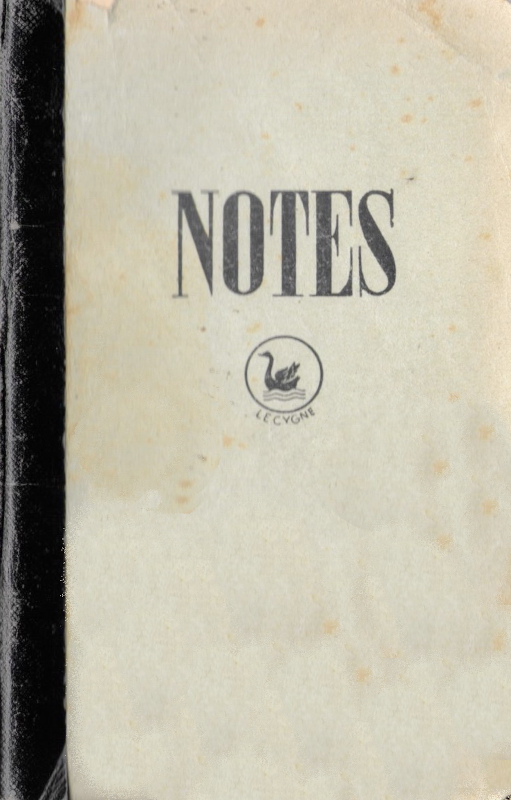
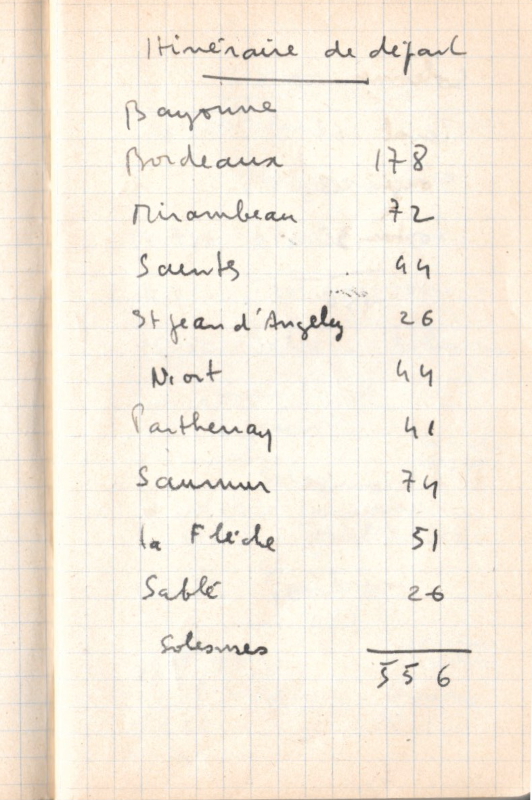
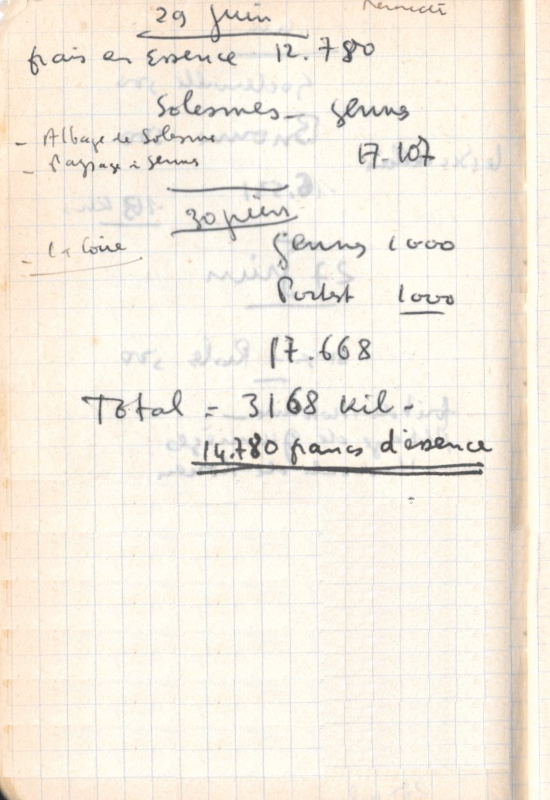
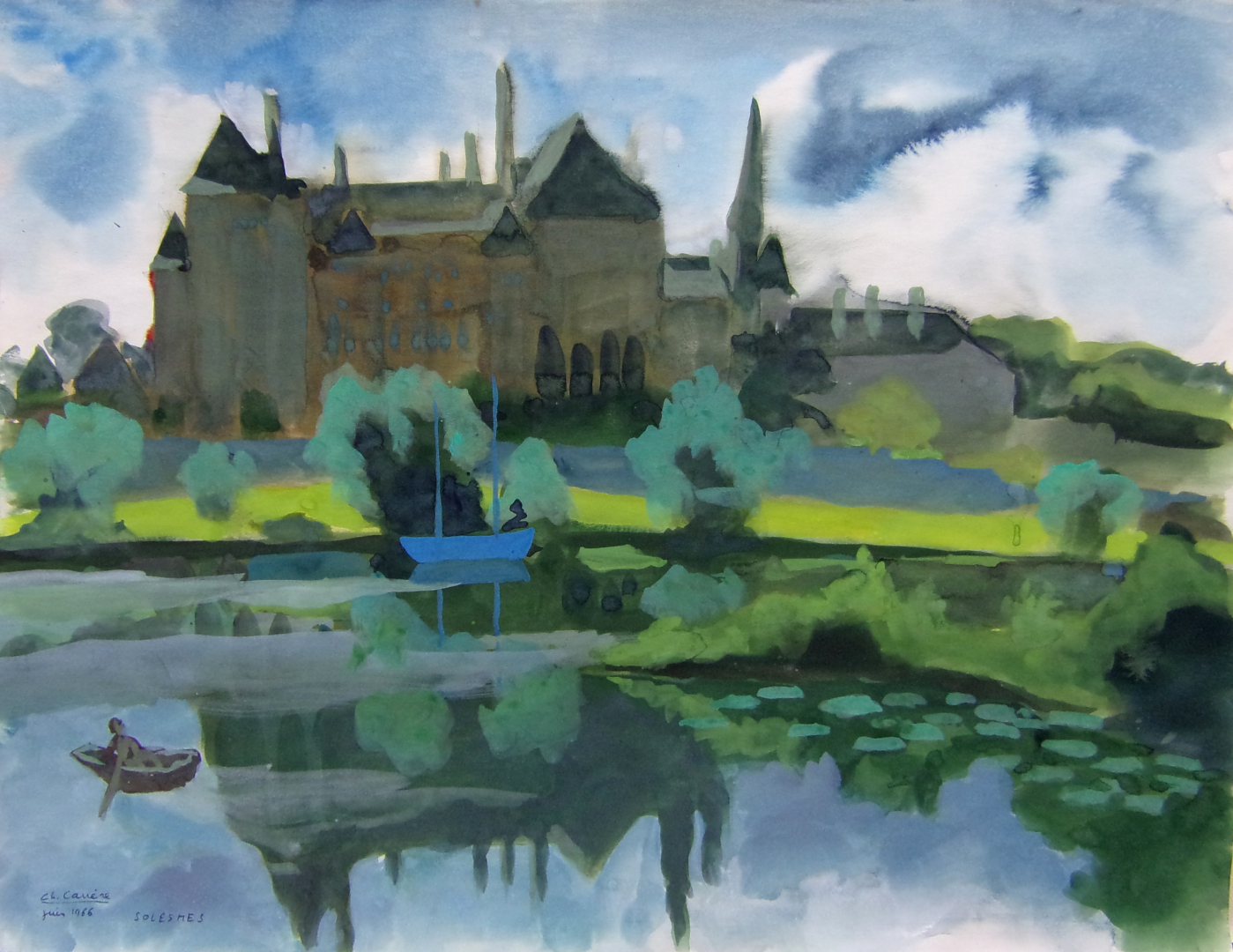
Photo©JanieC
Charles Carrère produced a very large number of paintings on the motif. A Focus will be devoted to a tour of France through the paintings of Charles Carrère. And there are some amazing discoveries! To be continued…

Photo@JanieC
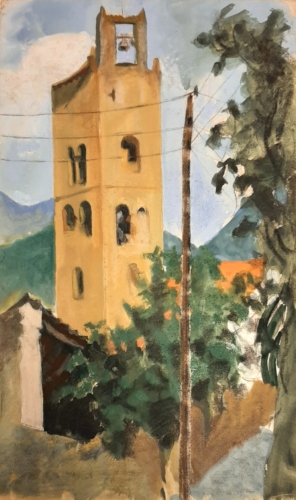
Photo©JanieC
In his studio
When Charles Carrère paints in his studio, he either paints from a photo or he simply creates.
FROM PICTURE
He takes photos on holiday or during his walks in nature and then uses them as inspiration for his paintings. As for example below: with on the left “The Lighthouse” and on the right an untitled work taken from a landscape.
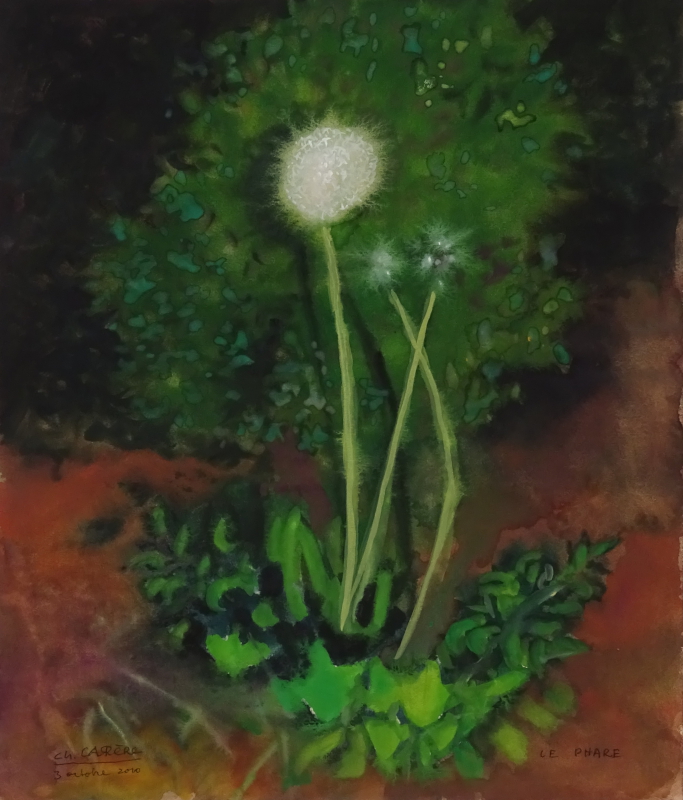
Photo©JanieC
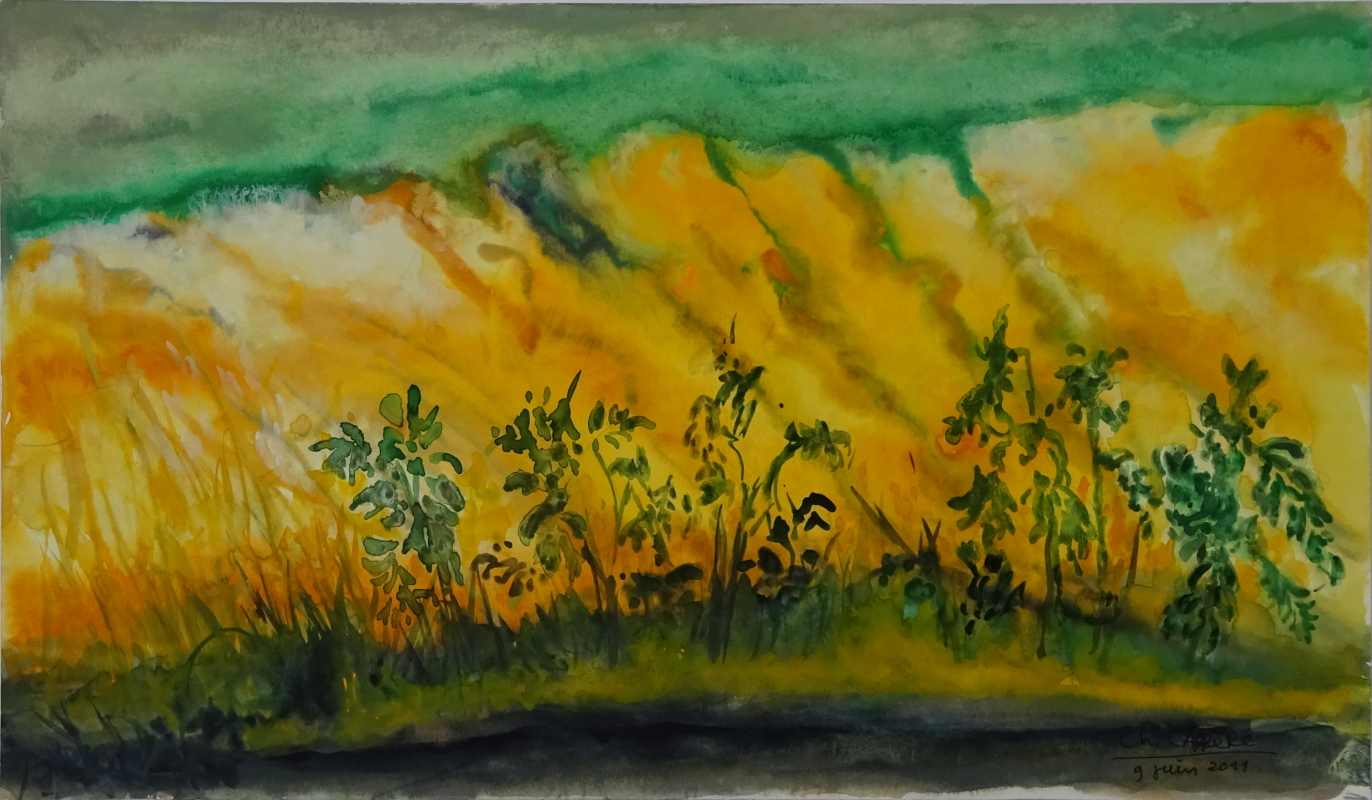
Photo©JanieC
During the last years of his life, Charles Carrère chose the small format for his paintings. Nature and light were his preoccupations at the time.
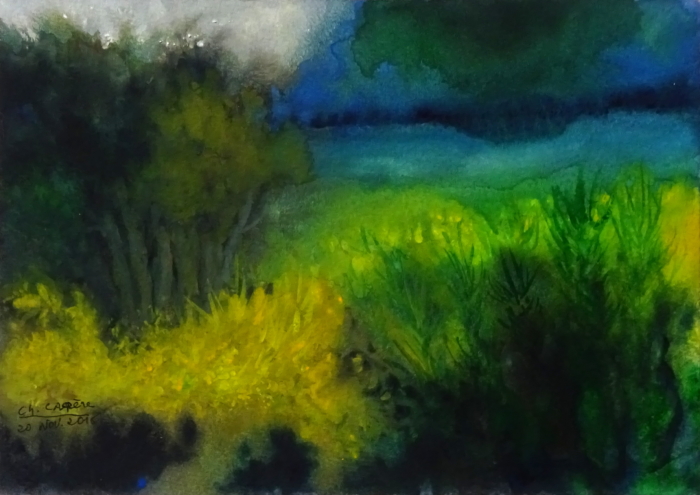
CREATIVITY AND SURREALISM
When Charles Carrère lets his imagination take over, it leads him towards surrealism.
This is how we often find birds with anthropomorphic profiles but also imaginary human portraits. Sometimes he creates works dealing with history or opera and often we find literary or poetic references. With Charles Carrère, the gap between the object and its representation is a common practice. As for his inspirations, they often come from his favourite poets such as René Char, Jacques Prévert or Paul Eluard to name but a few. And Charles Carrère, a lover of literature, often quotes Baudelaire and Mallarmé as well as Alfred Jarry and Apollinaire.
Some representative works:
Here is the ornithoromachy where the bullfighters are birds and the antitaureaumachy where the winner of the fight is the bull that is going to be decorated for his exploit.
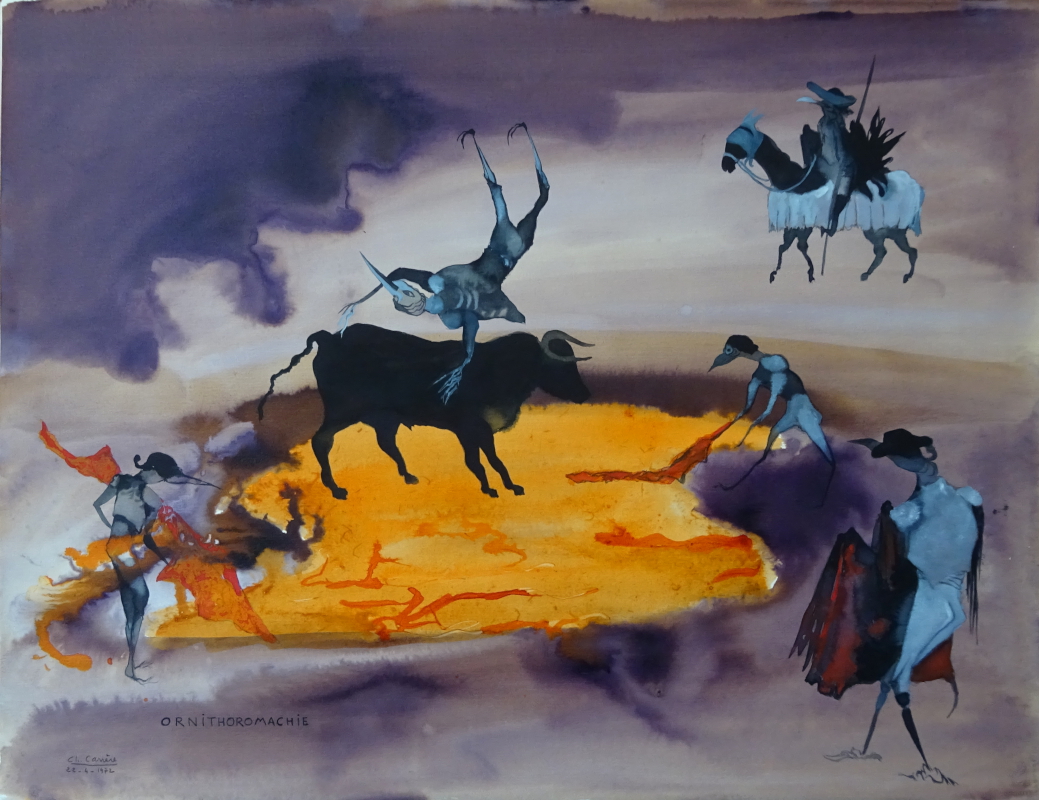
Photo©JanieC
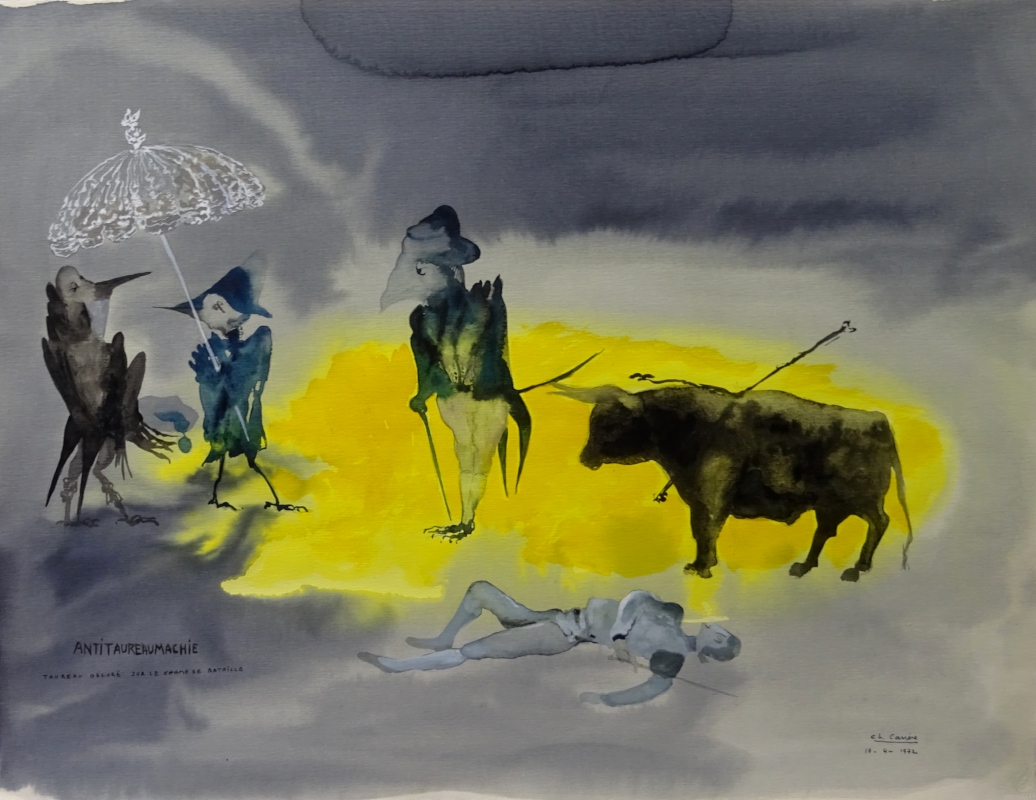
Photo©JanieC
Charles Carrère painted imaginary portraits. Sometimes he painted them with a little bit of piquant humour, as in this painting of a notary and a bishop, implying who is confessing who?

Photo©JanieC
Then here are two other imaginary portraits. On the left is the Far Easterner with his waterfall beard and on the right is the cobbler from the caprice of the same name.
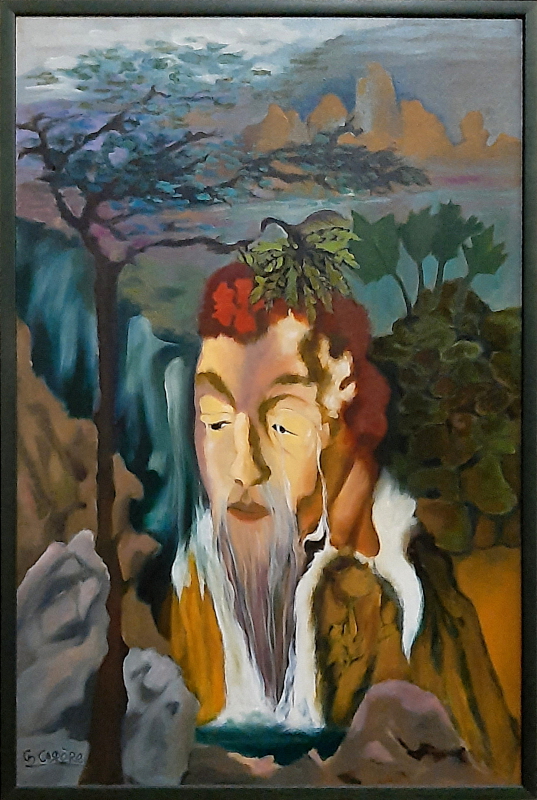
Photo©JanieC
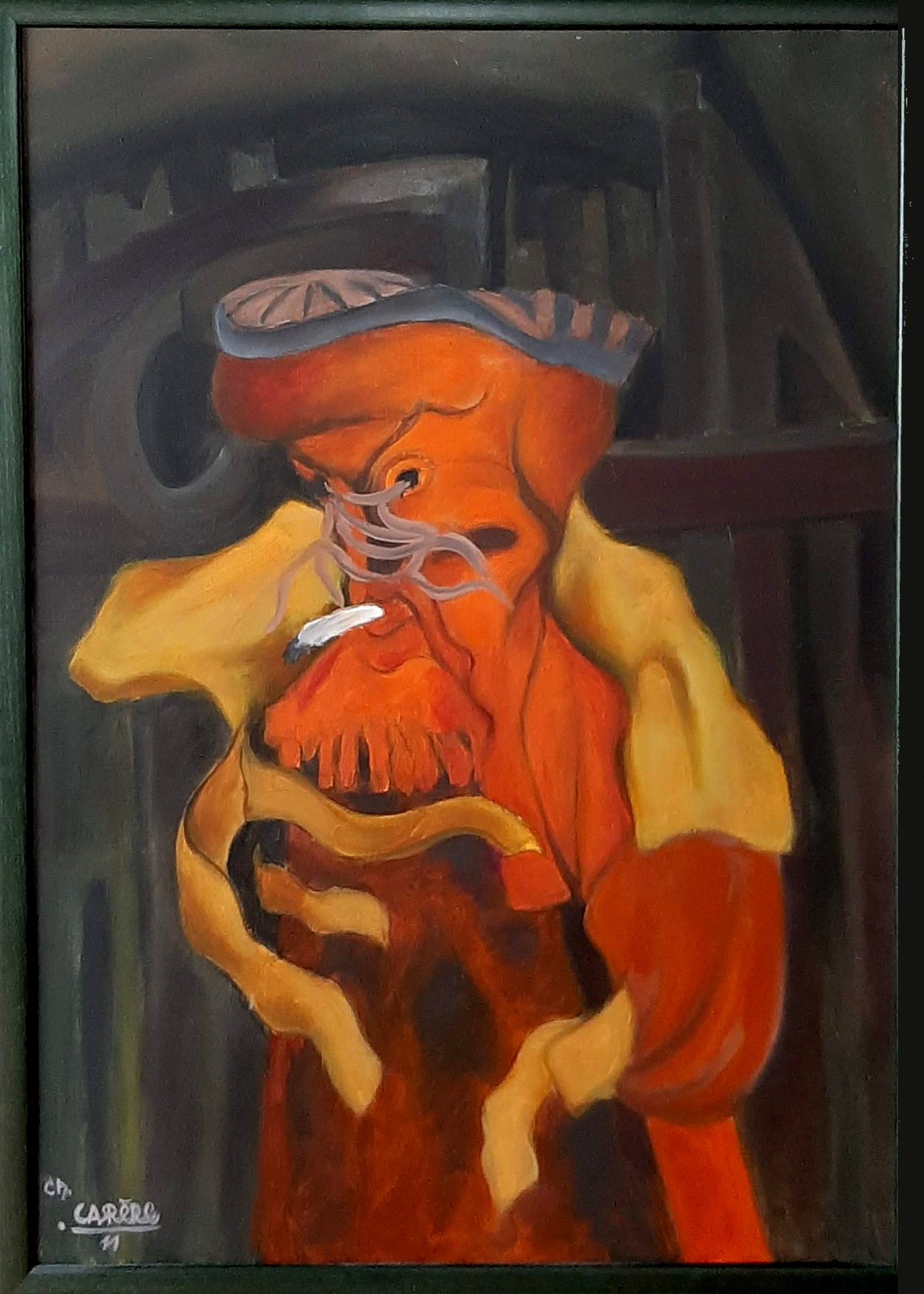
Photo©JanieC
Focus will be published regularly and will allow you to find out more about a work by Charles Carrère.
Continued towards: Plastic research
Or back to the main page: The multi-faceted artist
Or back to the Home page
This post is also available in: French

